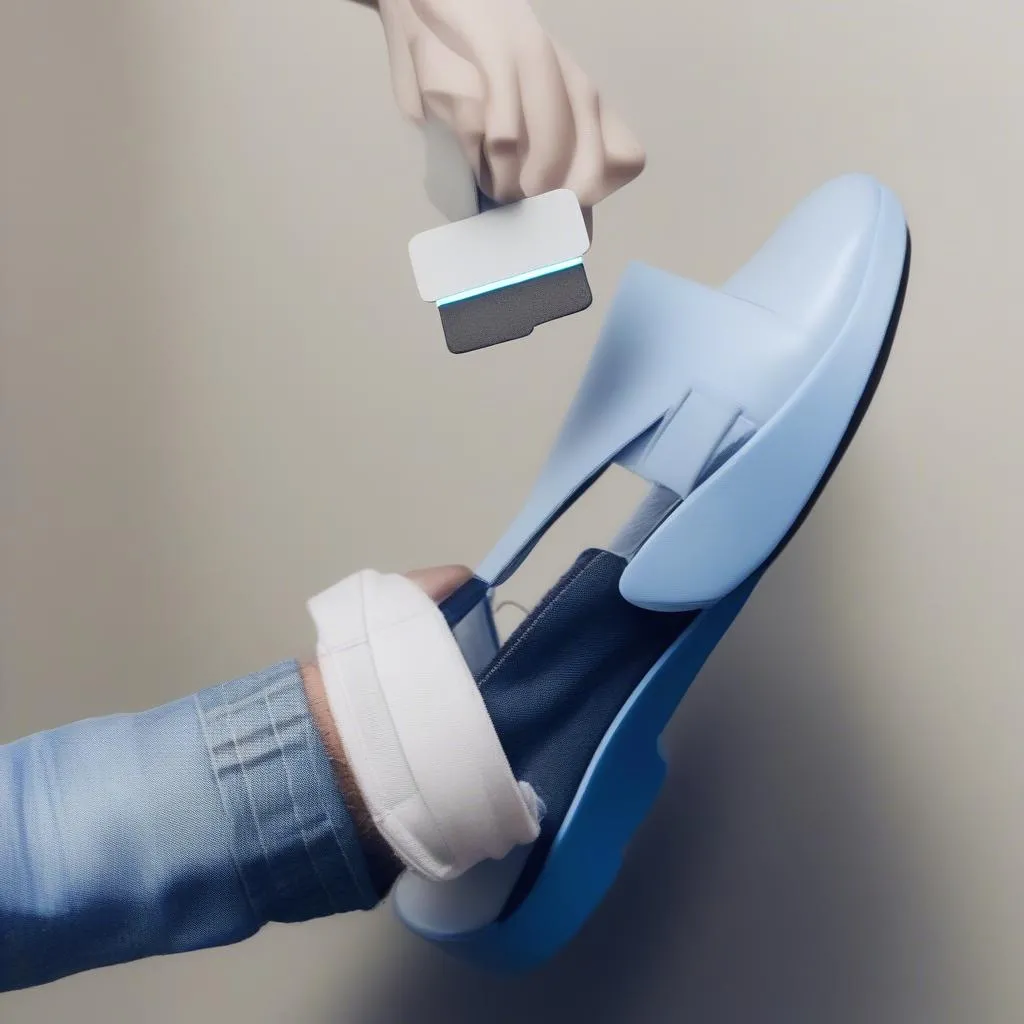The Ford F150 brake warning light can be a frustrating sight, signaling potential issues with your braking system. Understanding what triggers this light and how to diagnose the problem is crucial for maintaining safe driving conditions. This article provides a comprehensive guide to troubleshooting and resolving Ford F150 brake warning light problems, covering everything from simple checks to more complex solutions. ford f150 brake warning light stays on
Common Causes of the Ford F150 Brake Warning Light
There are several reasons why your Ford F150 brake warning light might illuminate. Some are relatively minor, while others indicate more serious problems requiring immediate attention.
- Low Brake Fluid: This is the most common cause. A leak in the brake lines, worn brake pads, or a faulty master cylinder can cause low brake fluid levels.
- Worn Brake Pads: Brake pads wear down over time, and thin pads can trigger the warning light.
- Parking Brake Engaged: Sometimes, the light stays on simply because the parking brake is partially engaged.
- Faulty Brake Light Switch: This switch activates the brake lights and can also trigger the warning light if malfunctioning.
- ABS Issues: Problems with the Anti-lock Braking System (ABS), such as a faulty sensor or module, can illuminate the brake warning light.
- Master Cylinder Problems: The master cylinder is responsible for distributing brake fluid pressure. A leak or internal failure can cause the warning light to come on.
 Ford F150 Brake Warning Light – Low Brake Fluid
Ford F150 Brake Warning Light – Low Brake Fluid
Diagnosing the Ford F150 Brake Warning Light
Start with the easiest checks first. Ensure the parking brake is fully released. Then, check the brake fluid level in the master cylinder reservoir. If it’s low, add brake fluid to the recommended level. If the light remains on after topping off the fluid, further investigation is needed.
Checking Brake Pads and Rotors
Inspect your brake pads for wear. If they are thin or worn down to the metal backing, they need replacement. Also, check the brake rotors for any signs of damage, such as warping or deep grooves.
What if the brake fluid is full and the pads look good? The next step is to check the brake light switch. 1997 ford f150 brake warning light This often involves testing the switch with a multimeter to ensure it’s functioning correctly.
Advanced Diagnostics and Solutions
For more complex issues, like ABS problems or master cylinder failures, specialized diagnostic tools may be necessary. A professional mechanic can use a scan tool to read diagnostic trouble codes (DTCs) from the vehicle’s computer. These codes provide specific information about the nature of the problem. 2006 ford f150 brake warning light
“A brake warning light should never be ignored,” says John Miller, a certified automotive technician with 20 years of experience. “It’s a critical safety system, and addressing the issue promptly can prevent serious accidents.”
Remote Diagnostics and Programming
In some cases, remote diagnostics and programming can be used to identify and resolve specific issues. 2011 ford f150 brake warning light This involves connecting the vehicle to a computer via a specialized interface and accessing the vehicle’s systems remotely. This technology allows technicians to perform software updates, recalibrate modules, and even diagnose certain hardware problems without physical access to the vehicle.
Conclusion
The Ford F150 brake warning light is a crucial safety indicator. Addressing the underlying issue promptly ensures the safety and reliability of your vehicle. While some problems can be resolved with simple checks and DIY solutions, more complex issues may require professional assistance. Never ignore a persistent brake warning light. 79 ford f150 brake warning light switch Taking swift action ensures safe driving and prevents potential accidents.
“Regular brake inspections are crucial for preventative maintenance,” adds Sarah Johnson, a vehicle safety expert. “Catching potential problems early can save you time, money, and most importantly, ensure your safety on the road.”
FAQ
-
What is the most common cause of the Ford F150 brake warning light? Low brake fluid is often the culprit.
-
Can I drive my Ford F150 with the brake warning light on? It’s highly discouraged. Have the issue diagnosed and repaired as soon as possible.
-
How often should I check my brake pads? Every 10,000 to 20,000 miles or as recommended in your owner’s manual.
-
What does ABS stand for? Anti-lock Braking System.
-
What is the master cylinder’s role in the braking system? It distributes brake fluid pressure to the brakes.
-
Is it expensive to fix a Ford F150 brake warning light issue? The cost varies depending on the underlying problem.
-
How can remote diagnostics help with Ford F150 brake problems? It allows technicians to diagnose and sometimes fix issues remotely, saving time and potentially reducing repair costs.


